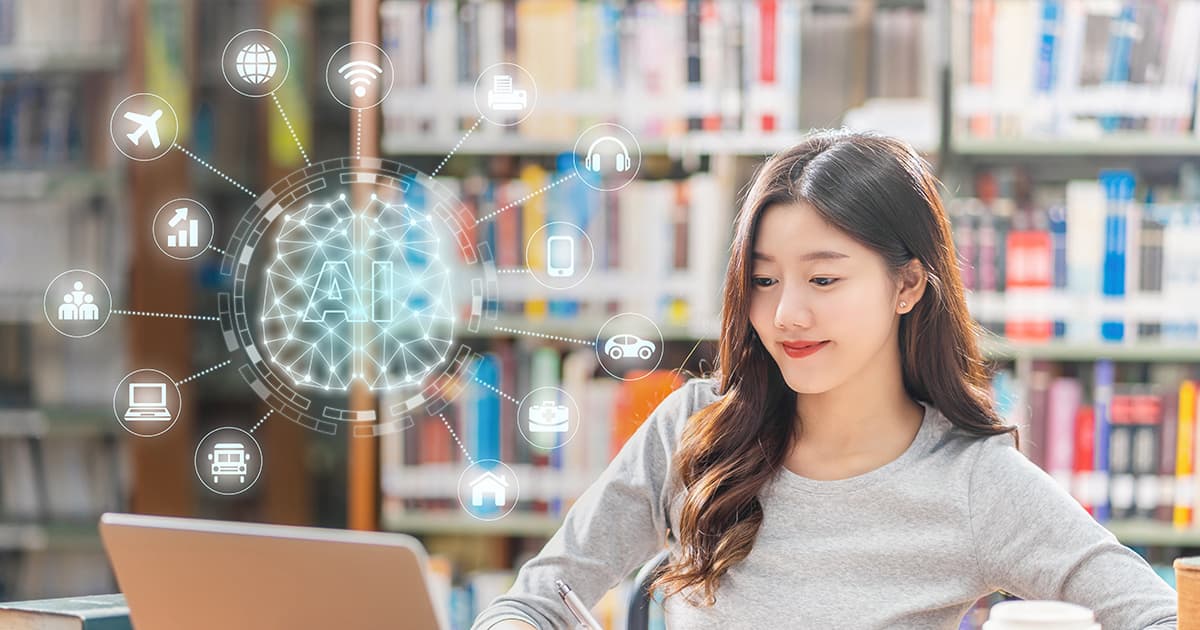Should Students Use AI To Do Their Homework?

There has always been some level of resistance on the part of teachers to the use of technology in the classroom and to do homework. Like it or not, though, AI is being used in the classroom and for homework.
Teachers have worried that calculators would mean students could not do math, that the internet would weaken research skills, and that word processing programs would make students unable to spell. AI is in the classroom and students are using artificial intelligence software tools for homework, such as ChatGPT, Bard AI, and many others.
Should students use AI for homework?
Today’s big debate is about the use of artificial intelligence (AI) for learning. Some educators believe that allowing students to use AI will have a negative impact on their ability to think and learn.
Most educators would probably argue that students should not use an AI tool to generate their homework assignments in their entirety and call the work their own, but just as previous technology was used to enhance learning, there is a time and place for AI.
Big change means big questions
AI is already used in academic writing and both teachers and students use it to support their work. As AI becomes more advanced, institutions need to define what is considered AI assistance and what is cheating or plagiarism. Concerns about academic misconduct are already widespread across higher education institutions in Canada and internationally.
Some questions that need to be answered include:
- If an essay was written by AI but the student did the coding themselves, is this cheating?
- Where is the line between AI assistance and academic cheating?
- If 49% of an essay was written by AI and 51% by a student, is this an original work?
- Do the same rules apply to students that apply to researchers and academics?
AI as a learning tool
While there are no easy answers to these questions and AI is a powerful tool for learning. It can generate essays, music, and art. Allowing students to assess what AI can produce on a specific topic can help them develop critical thinking skills. It can be used for creating something new, gaining knowledge, and collaborating with peers.
AI in math classrooms
AI can be used to develop problem-solving skills. Students can input a math problem into an AI tool and then collaborate in groups to come up with their own answer. They can then draw a conclusion about which is more correct based on what they have been taught.
AI in music classrooms
A teacher can ask students to make a list of criteria for what good music is. Students can then collaborate and ask an AI tool to create a piece of music that meets these criteria. Students can create responses individually indicating whether the music is good and what would make it better. This teaches them to identify problems and come up with solutions.
AI in English classrooms
Students are often asked to read a text and write a paragraph or essay with their conclusion or interpretation. They can construct an answer and have an AI tool write the paragraph and then assess it based on their teacher’s criteria. Students can then write a paragraph that argues the opposite of what the AI generated. This teaches students to understand which information supports the opposite viewpoint and develop rebuttals. Gathering and assessing information strengthens critical thinking skills.
AI as a research tool
While educators are concerned about students using AI for assignments, it can be a great tool for research. Students can use what AI can produce as starting points for assignments and see if they meet the standards their teachers have for them.
Students will draw their own conclusions about what the AI comes up with and can use it to help them with their work. It can be useful for finding references, topics to research further, and ideas that students can draw on and make their own.


.jpg?300x300)
